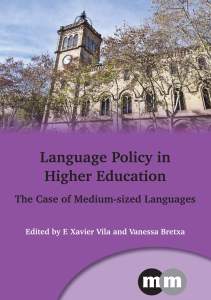We recently published Communication that Counts by Pia Patricia P. Tenedero. In this post the author dispels the myth about accountants and poor communication.
 More than a decade of teaching English language courses to accounting professionals and students in the Philippines has shown me that these people are serious about improving their English skills. They are among the most eager and diligent adult learners I have had the joy to teach. While they are not all A+ students, it is NOT true that they are poor in communication any more than professionals and students in other disciplines. But somehow, their number-smartness seems to be constantly leveraged against their identity as corporate communicators.
More than a decade of teaching English language courses to accounting professionals and students in the Philippines has shown me that these people are serious about improving their English skills. They are among the most eager and diligent adult learners I have had the joy to teach. While they are not all A+ students, it is NOT true that they are poor in communication any more than professionals and students in other disciplines. But somehow, their number-smartness seems to be constantly leveraged against their identity as corporate communicators.
“Accountants are not good communicators.”
Echoes of this complaint have motivated me to interrogate it. Is it true? Certainly, it is easy to believe especially with the introverted quant persona repeatedly portrayed in movies, and the skills gap discourse reported in mostly Anglophone-based communication research. But as in all stereotypes, its truth has limits.
To uncover the limitations of this claim, Communication that Counts unpacks the issues by clarifying what counts as ‘good communication’ in globalized accounting schools and workplaces? Who sets these norms? For what ends? In the process, the book challenges other deeply held beliefs about language, higher education, and the workplace.
“The language curriculum should be aligned with workplace practices to ensure the communicative competence of future accountants.”
I partially agree with this and propose some practical innovations in the communication training provided to future accountants. (In January 2023, I begin teaching Communicating for Globalized Accounting, an elective course based on the findings of this study.) At the same time, I caution against viewing perfect alignment in school-workplace communication practices as a panacea to the supposed gap in the communicative ability of university students. It is an impossible target, to begin with! Higher education and the workplace are interrelated domains, yes, but they also have distinct goals. School is only partly a preparation for the workplace, so we can only target partial alignment at best. This dynamic, however, does not make schools any less of a ‘real world’ than corporate and home offices. Naturally, what happens in accounting schools is not an exact replica of what happens in accounting workplaces, including how teachers, students, and practitioners communicate, what languages they use, and who they view as effective communicators.
“English is the language of global accounting.”
I also examine this, and other ideas about language held by accounting students, teachers, employers and professionals. The way people think about languages is shaped by and, in turn, shapes language education and experiences. Yet we do not reflect on it enough. I believe it is especially important for language teachers like me to be more aware of our language attitudes as this affects the practices we (dis)allow in the classroom and which our students may expect to see in the workplace (a.k.a. ‘the real world’). But, as I’ve discovered in my ethnographic work with onshore and offshore accountants, English is, in fact, NOT the only language spoken or written in the highly multilingual and multicultural space of globalized accounting.
Globalized accountants engage in complex language and communication work. In this field, effective communication has multiple, shifting meanings. While English is treated as a superstar, it is not the only skill that counts in this multilingual field. These and more are part of the Global South story I share in Communication that Counts.
For more information about this book please see our website.
If you found this interesting, you might also like Language Management by Natalie Victoria Wilmot.













